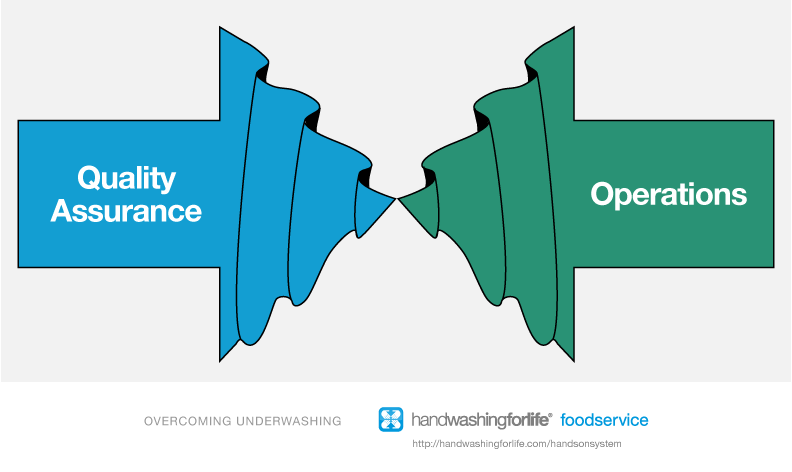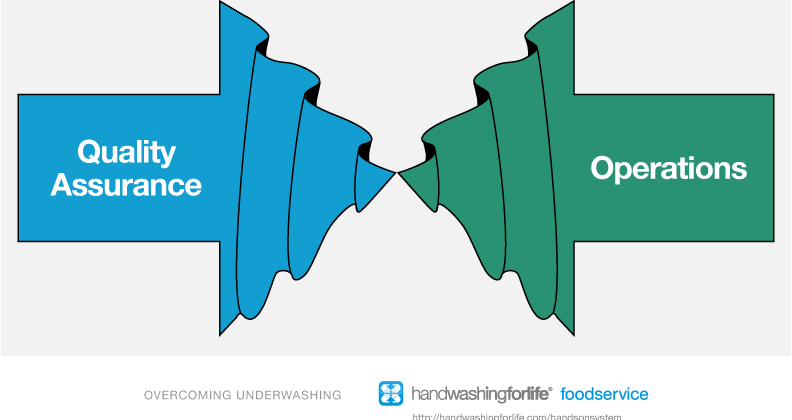An operator’s food safety risk is managed by a focused team of professionals with specific skills, objectives and measurements for success. Each works within a different time frame.

The prep-line and wait staff are closest to the food and those served. Their skills and languages may differ but they share a primary objective – service. It has its measurements ranging from temperature control and service times to tips and customer surveys. They manage the moment.
Restaurant managers, the local Operation’s representatives, are charged with leadership and are accountable for the performance of the staff. Their objective is to deliver all the numbers that have been set according to the business model – sales, customers served, turnaround time, spend per customer. They are rated by the shift, week, month and year, primarily on efficiency measures.
Quality Assurance knows the science of food safety. Their objective is to monitor the measureables to avoid outbreaks. They keep logs, look for trends and support Operations in their quest to do it all while delivering sales and cost control numbers. Quality Assurance is measured by customer complaints and outbreaks.
Who manages the out years? Who is lighting the path of business sustainability for 2020? Look at the watershed food safety event at Jack In The Box (JITB) in 1993. Their organization changed forever as their prime measurement became survival.
The lost opportunity at JITB was immeasurable, including the dropping of international expansion plans. Brand protection became a strategic goal. More emphasis was placed on prevention and they started measuring anything and everything that could assure customer wellness. They survived and once again thrive, taking years to get back on the growth curve.
Other chains and individual restaurants suffered outbreaks and were unable to recover. The list of independents is lengthy. The Chi-Chi’s chain in 2003 closed after an outbreak in Pennsylvania. Most chain incidents have been survived with moderate disruption. A Chili’s unit in Illinois endured an outbreak and is now a Jared Jewelry location. Chili’s struggled unsuccessfully for a year to get their customers back.
Handwashing by restaurant staff is rarely measured.
Handwash reporting is non-existent at the restaurant manager level.
Operations ignores handwashing as it is not measured, interferes with productivity and no one asks them for handwash reports.
C-Suite executives see no problem, hear no problem and speak of no problem, They can comfortably ignore the CDC’s warning that Handwashing is the single-most important means of preventing the spread of infection.
Handwashing is low-cost liability insurance and a major contributing factor in reducing staff absenteeism. It is now measurable, giving operators a level of process control and basis for behavior change. Readers are invited to visit NAFEM on the Eagle booth (# 5020) to see Handwashing For Life’s HandsOn System in action integrated with Eagle’s state-of-the-art HFL-5000 Hand Hygiene Station.


